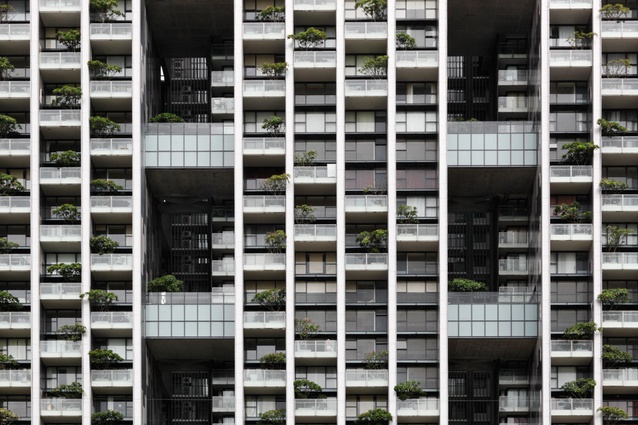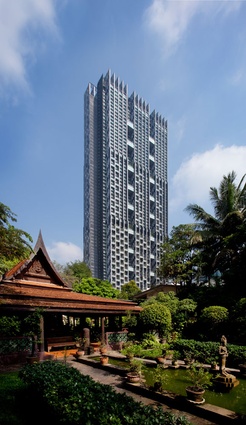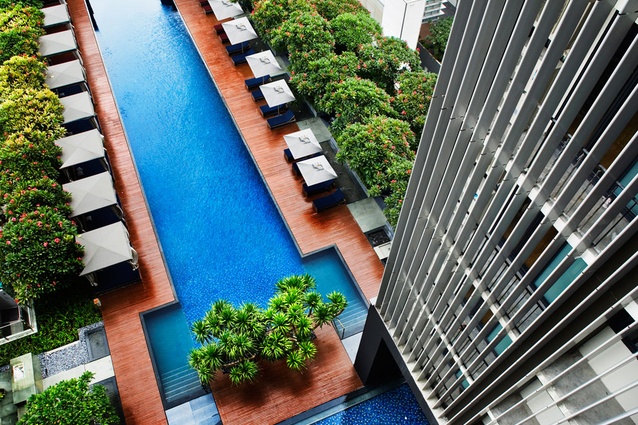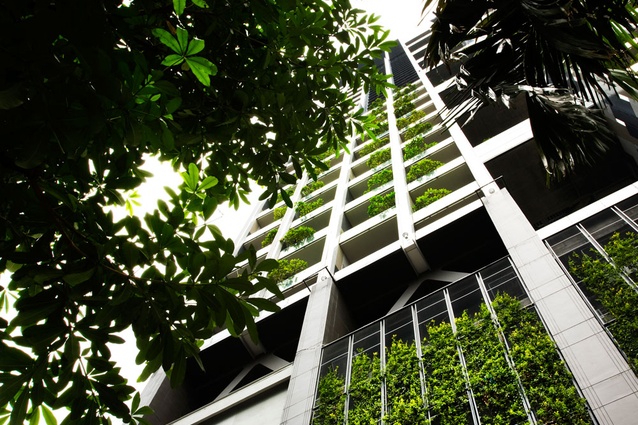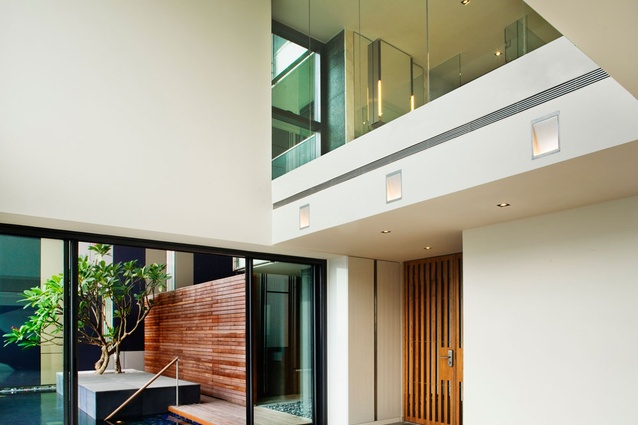The Met takes Lubetkin
Singaporean architecture firm WOHA takes out RIBA's Lubetkin Prize for 2011.
The Met in Bangkok by WOHA has scooped the Royal Institute of British Architects’ Lubetkin Prize for the most outstanding work of international architecture by a member of the RIBA.
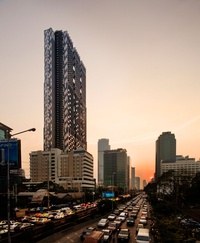
The Met is a residential skyscraper incorporating outdoor spaces, balconies and gardens. Apartments in the 66 storey tower are naturally cooled – the building’s perforated facade counters the effects of high wind speeds at the building’ suppper levels. RIBA’s official release on the building says that by “punching” holes through the building and drawing air up vertical voids in the structure, the architects were able to introduce natural ventilation to flats at all levels. Some of these floors are kept open to provide communal spaces, which include a garden, a gym, a 50 metre swimming pool and other leisure facilities, such as barbecue and seating areas.
There were four other buildings competing for this year’s Lubetkin Prize: Masdar Institute, Abu Dhabi by Foster + Partners, Guangzhou Opera House,China by Zaha Hadid Architects, Boston Museum of Fine Arts by Foster + Partners and Virginia Museum of Fine Arts, in Richmond, USA by Rick Mather Architects + SMBW.
Lubetkin Prize jury chair and RIBA President, Angela Brady said:
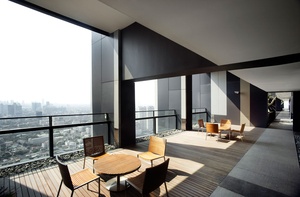
‘This year’s shortlist for the RIBA Lubetkin Prize was of an exceptionally high standard, really representing some of most innovative and unique pieces of architecture of the decade. WOHA’s The Met Building is a highly deserving winner; the building combines beautiful design with sustainable credentials, creating a high specification residential complex and an intelligent alternative to the sleek, air-conditioned box in a tropical environment. Congratulations to WOHA for their creation of a delightful and unique building.’
The jury also said:
“Residents also enjoy improved security, less noise and dust, and great views. Green creeper screens create living walls all the way up the building to help shade the occupants and further cool the building through transpiration. Just as [WOHA’s] projects straddle the private and public sectors, The Met provides public as well as private spaces. The building’s strength derives from the fact that, like a lighthouse, it is wider at the bottom than at the top. It is tied together by U shaped braces every six floors. Some of these floors are kept open and provide communal spaces: gardens, a gym and other leisure facilities, barbecue and seating areas. On top of the nine storey podium building is a 50 metre swimming pool. Such generous provision in an apartment building could generally only be provided underground. Apartments are accessed directly by lift, rather than corridors, and the standard of finishing in the flats is extremely high. It takes clever architecture to pull this off and WOHA have proved themselves to be very intelligent architects. The Met shows that an alternative to the sleek, air-conditioned box can work in the tropics and this has implications everywhere.”
The shortlisted buildings were seen by a visiting jury comprising architects Deborah Saunt, Jim Eyre and Peter Clegg, and RIBA Head of Awards Tony Chapman.
The Lubetkin Prize was established in 2006 and is given to the best international building outside the EU. It is named after the world-renowned architect Berthold Lubetkin (1901 - 1990). The winner will be presented with a unique cast concrete plaque, based loosely on Lubetkin’s design for the Penguin Pool at London Zoo, commissioned by the RIBA and designed and made by the artist Petr Weigl.

